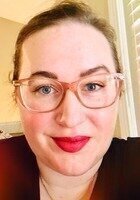All AP Physics 2 Resources
Example Questions
Example Question #1 : Slit Experiments
What did the double-slit experiment (also called Young's Experiment) demonstrate?
Light cannot be diffracted by slits
The double-slit experiment did not tell scientists anything useful
Light is composed purely of particles
Light is composed purely of waves
Light demonstrates properties of both particles and waves
Light demonstrates properties of both particles and waves
The process for the double-slit experiment consisted of a coherent light source aimed at a screen with a plate with two parallel slits in between them. The light traveled through each of the slits and had wave-interference (destructive and constructive interference) to produce bands of alternating light and dark along the screen. This result would not be expected if light consisted solely of particles, as was classically thought. This showed that light is a wave, because waves interfere in that manner. The light also was found to be hitting the screen at discrete points as individual particles (photons), with the alternating bands indicating the density of the particles that hit the screen. In versions of the experiment that featured detectors at the slits, the photon passed through a single slit (as would a particle) and not both (as would a wave). These outcomes demonstrate the wave-particle duality of light.
Example Question #2 : Slit Experiments
Suppose a light with a wavelength of 

To determine the angle, use the formula for bright fringes in a two-slit experiment.
Rewrite the equation so that the angle term is isolated.

Substitute all the givens and solve for the angle.
Example Question #3 : Slit Experiments
Suppose light pass through a slit with a width 

To solve for the wavelength of the light, use the formula for dark fringes of a single-slit interference.
Rewrite the equation in order to solve for lambda (wavelength). Since this is the first dark fringe, the value of 
Example Question #4 : Slit Experiments
Suppose that a diffraction experiment is performed in order to determine the wavelength of light. As light of an unknown wavelength is passed through a 

For this question, we're presented with a scenario in which light is passing through a small slit. In doing so, the light is diffracted, meaning that it is spread out along a viewing screen. In such a case, there will be a central bright fringe, with alternating dark and bright fringes as one moves above and below the central fringe.
In this question, we're told that the size of the slit is 

First and foremost, we'll need to use the light diffraction equation:
In the above equation, 




Now that we have the equation, we can isolate the wavelength term:
Next all we have to do is plug in the values that we know, and we can solve for the wavelength:
Example Question #2 : Slit Experiments
What was a result of Young's double slit experiment?
None of the answers are correct.
Light is actually solely a wave, and the Corpuscular Theory of Light was wrong.
Light is solely comprised of particles, called photons.
Light was demonstrated to have properties consistent with both particles and waves.
Light, when separated by two slits, turns back into a single beam when observed.
Light was demonstrated to have properties consistent with both particles and waves.
Young's Double Slit Experiment is famous because it demonstrated that light, theretofore thought of as solely discrete particles called corpuscles, actually had properties of waves in addition to particles. This was demonstrated by the two light beams separated by the note card used by Young constructively and destrucively interfering with each other to form bands of light and darkness, which showed that light acts like a wave. However, the light that reached the wall was made up of discrete points, which could only occur if light also could behave like it was made of particles. Therefore, it was concluded that light can act both like a particle and a wave, known as wave-particle duality.
Example Question #3 : Slit Experiments
Red light (wavelength 


This question is just a quick application of the double slit formula.








Note-The value we got is very large because of the very small slit width.
All AP Physics 2 Resources



































